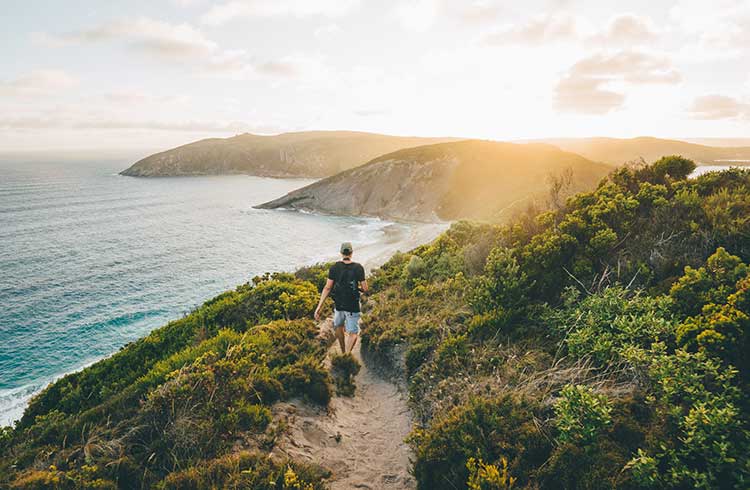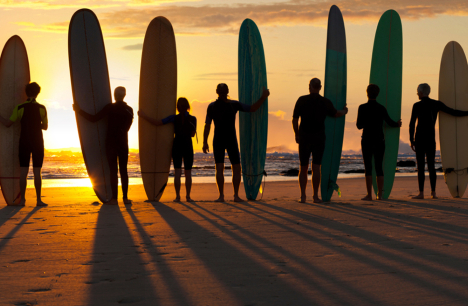Working Holidays in Australia: Safety Tips for Travelers
From healthcare to job-hunting and navigating the vast landscape, there are many things to consider when planning a working holiday in Australia. Here are tips to making the most of the trip of a lifetime.
 Photo © GettyImages/Posnov
Photo © GettyImages/Posnov
- Healthcare in Australia
- Finding work in Australia
- Climate and creatures
- Road safety
- Emergency help in Australia
Australia is a big country, with big adventures on offer, but it’s important to make sure any travel is underpinned with the basic knowledge to make sure personal safety and well-being are the foundation of your big trip.
Working holidays are a great way to travel the country while earning money and getting an authentic Australian experience. But where to start? Many backpackers focus on the major cities of Sydney and Melbourne to kick off their trips and take it from there. It’s absolutely essential to factor in the vast expanse of Australia, which is the sixth largest country in the world with a land mass of about 7.7 million square kilometers, but with a population of just 26 million.
Weather and landscapes can vary hugely, from the red desert through to rainforest and tropical areas, to winter snow in the southeastern region. The reality of logistics can mean long journeys, and it could take hours to get emergency assistance when driving, with extra challenges thrown in by extreme heat. So make sure you are fully prepared for whatever adventure it is you are taking on.
Healthcare in Australia
Medicare is Australia’s public health insurance system, which allows people to access some services for free or at a subsidized cost. The Australian Government has reciprocal healthcare agreements with 11 countries, meaning travelers from these regions can be entitled to essential services such as access to local doctors and treatment at public hospitals.
The countries are: Belgium, Finland, Ireland, Italy, Malta, The Netherlands, New Zealand, Norway, Slovenia, Sweden, and the United Kingdom.
Cover and duration vary between countries, so be sure to check here. To apply for Medicare, you need to download the enrolment form and follow the instructions.
If you are not from the above countries, you need to consider taking out health insurance – in case of emergency treatment, the cost could be considerable. Make sure you check what your policy covers and that it will last for the duration of your trip.
Finding work in Australia
There are lots of avenues to hunt for jobs, depending on where you want to go and what you plan to do. For urban life, employment websites like Seek and Indeed are a good bet. There are also recruitment agencies that specialize in backpacker jobs – an internet search will throw up many companies to contact.
Hospitality is a great industry for travelers, with a big demand for talent. If you are planning to work in this area, it’s a requirement to get a Responsible Service of Alcohol certificate (note: you will need the one applicable to the state you will be working in). It usually takes between four to six hours to complete the course, and you can receive your certificate on the same day.
For following the sun elsewhere, fruit picking and farm work are popular options. The Australian Government has many online resources about this type of work plus a database of jobs and crop seasons around the country’s harvest trails. It’s important to understand that work of this nature can be very labor-intensive and in hot weather conditions, so make sure you know what you’re getting into, particularly in remote regions. You should ensure you do your research before taking on any commitments to be certain it’s a good fit.
It's also worth checking out social media pages for backpackers in Australia, with many employers posting jobs and travelers sharing information about opportunities or challenges. Hostels are also a good source for job postings.
Climate and creatures
There have been extreme weather events in recent years, with regions being hit by bushfires and flooding. In general, weather patterns are easy to assess by research. For example, in the Red Centre, summer (December-February) temperatures can reach up to 40 degrees, but January is the wettest month for rainfall and then winter temps can reach zero degrees at night. Elsewhere, traveling north of the mid-Queensland coast gets you into tropical territory with hot, humid weather, and tropical storms and a rainy season across summer.
As for Australia’s well-documented wildlife, be reassured that dangerous creatures, from spiders to snakes and sharks, don’t lurk everywhere so there aren’t risks on every street corner. But care needs to be taken, for example, when camping or hiking through certain areas – you can get guidance from the national parks and conservation bodies.
For safety when swimming, there is plenty of information available. Rips – powerful, shallow currents that can drag people out to sea – are the main coastal hazard in Australia. Surf Life Saving Australia, the national voluntary lifeguard service, has information on beach safety and where to find patrolled beaches. When traveling in north Queensland, check out the details on stinger season, which runs from November to May.
Road safety
Getting around Australia’s huge terrain requires careful planning. Routes that seem like straightforward trips can be much bigger commitments than expected – for example, driving from Sydney to Brisbane is a 10-hour drive along a distance of close to 1,000 kilometers. There are lots of tips on navigating the roads, not least, of course, that people drive on the left. You can drive for up to three months with a foreign license, as long as it’s in English or you have a translated version, and then you can apply for a local license. Seatbelts are compulsory. And it’s always best to travel with a map – mobile coverage can be unreliable outside of urban areas.
Emergency help in Australia
Australia’s emergency number for police, fire or ambulance services is 000, known colloquially as triple-oh. There is also a police assistance line for non-urgent cases – such as theft – which is 131 444.
Crime levels are generally no different in nations such as the United Kingdom, for example. But common sense prevails: don’t put yourself at risk, and when visiting tourist hotspots be careful to look after your bags and other personal possessions.
Related articles
Simple and flexible travel insurance
You can buy at home or while traveling, and claim online from anywhere in the world. With 150+ adventure activities covered and 24/7 emergency assistance.
Get a quote

No Comments